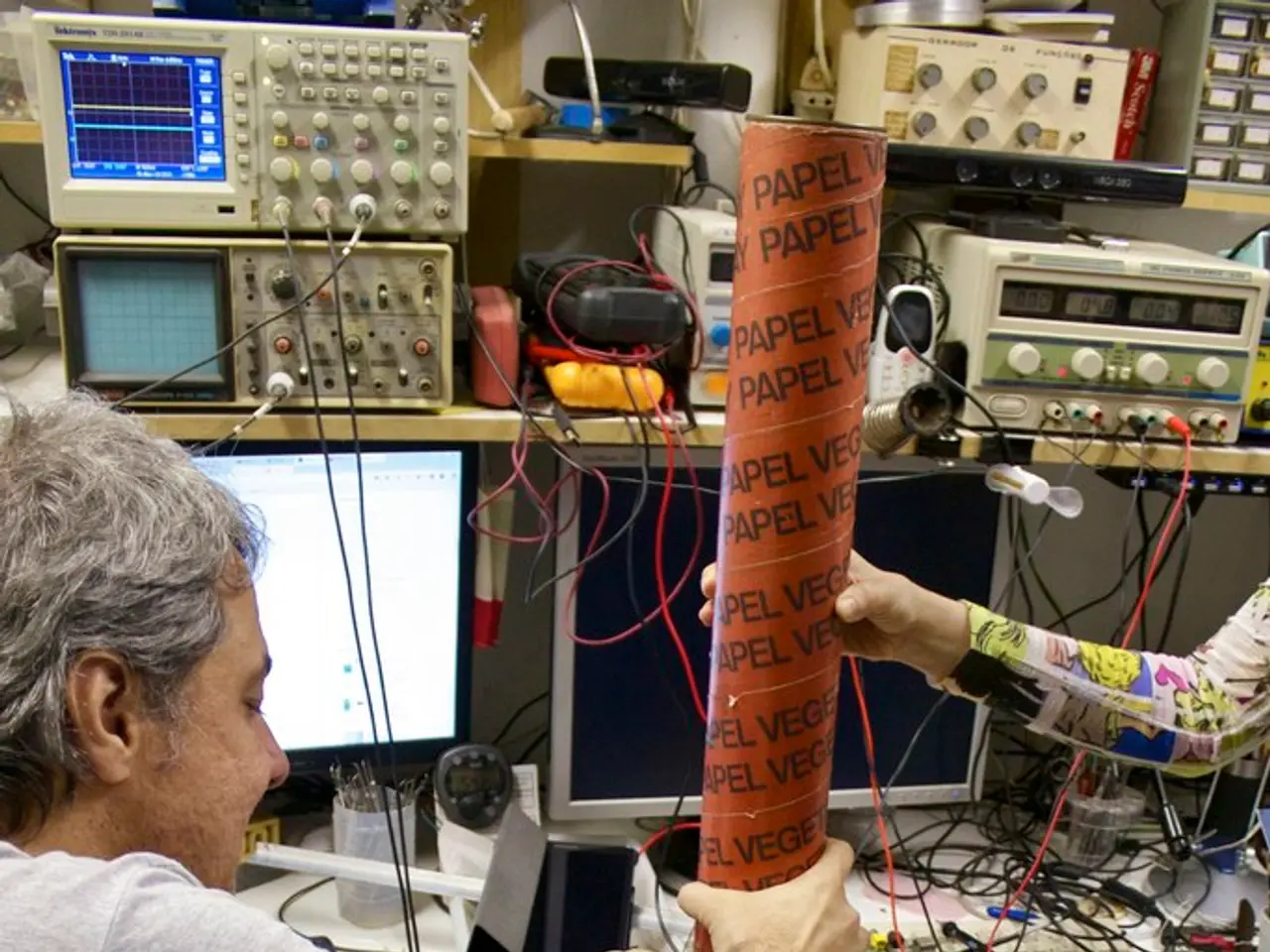Emerging magnetic innovation promises to revolutionize stopping mechanisms
In the world of braking solutions, advancements in magnetic technology are making a significant impact, offering numerous benefits such as increased efficiency, quicker response times, reduced maintenance requirements, enhanced reliability, and the potential for innovative solutions.
The integration of digital control systems allows for precise management of magnetic brake forces, providing accurate and responsive control over braking processes. This precision is particularly valuable in electric vehicles (EVs), where magnetic braking systems are increasingly being adopted to boost efficiency and reduce wear and tear on traditional friction-based brakes.
One of the key advancements in magnetic braking systems is the Electromechanical Braking System (EMB), which replaces traditional hydraulic brakes with fully electric actuation. EMBs offer several advantages, including easier integration into electric vehicle platforms, reduced overall vehicle weight, precise electronic control, lower maintenance, faster and more efficient vehicle assembly, and increased reliability.
Innovations in magnetic materials, like bonded magnets, also play a crucial role in the development of magnetic braking systems. The bonded magnet market is expected to grow significantly, driven by demand in electric vehicles and industrial automation. Advanced winding designs, magnetic materials, and thermal management enhance motor efficiency, maximizing energy conversion during braking.
Regenerative braking systems, which harness kinetic energy during deceleration to recharge EV batteries, are also seeing advancements. Improvements include more efficient electric motors, next-generation battery technologies, integration of AI and machine learning for predictive braking control, and vehicle-to-everything (V2X) communication to optimize braking across traffic flows for fleet-level efficiency.
The applications of magnetic braking systems extend beyond electric vehicles. They are also being applied in heavy-duty transportation and industrial vehicles, where precise control and low maintenance are critical. Future braking systems incorporating AI and V2X will allow smarter, predictive braking to maximize energy recovery and improve safety in autonomous or semi-autonomous transport systems.
In summary, magnetic braking systems in transportation are evolving towards more integrated, efficient, and intelligent solutions, leveraging electromechanical actuation, advanced magnetic materials, and regenerative energy recovery technologies. These innovations drive improvements in vehicle performance, energy efficiency, and sustainability across the transportation sector.
As the adoption of magnetic braking systems continues to grow, global collaborations in the supply chain might address shortages of critical magnetic materials. Research into ferromagnetic Shape Memory Alloys offers potential for brakes that can adjust their properties based on vibration levels or temperature, enhancing safety and operational efficiency.
User education is crucial in ensuring that the benefits and potential concerns of magnetic technology are widely understood. With continued advancements and widespread adoption, magnetic braking systems are poised to revolutionize the transportation industry, offering a more sustainable and efficient future.
Financing from various sources is essential for the growth of science and technology in the magnetic braking system industry, enabling further research and development of magnetic materials like bonded magnets and Shape Memory Alloys.
The integration of AI and V2X communication technology in future magnetic braking systems can lead to smarter, predictive braking solutions for autonomous or semi-autonomous transport systems, enhancing safety and operational efficiency.




